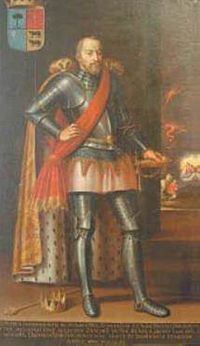Mother Teresa Cajal Parents Teresa Cajal | Father García Sánchez | |
 | ||
Died 21 February 1151, Borja, Zaragoza, Spain | ||
Pedro de Atarés (c. 1083, Borja – 21 February 1151) was a Spanish noble and member of the House of Aragón. He founded the Veruela Abbey, the oldest Cistercian monastery in Aragon.
Contents
Family
Pedro de Atarés was the son of García Sánchez, Lord of Aibar, Atarés, and Javierrelatre, and grandson of Sancho Ramírez, Count of Ribagorza, an illegitimate child of King Ramiro I. His mother was Teresa Cajal, a sister of Fortún Garcés Cajal, one of the most powerful magnates in the Kingdom of Aragón.
Pretender to the throne
Lord of Atarés and Javierrelatre, which he inherited from his father, and of Borja, thanks to the donation by King Alfonso VII of Castile, Pedro de Atarés was one of the claimants to the throne of Aragón after the death, without issue, of King Alfonso I the Battler. According to the Crónica de San Juan de la Peña, written in the 14th century, his haughty behavior cost him the crown and the Aragonese barons in an assembly chose the deceased king's brother who reigned as Ramiro II.
Founder of Veruela Abbey
In 1146, Pedro de Atarés founded Veruela Abbey (Real Monasterio de Santa María de Veruela), the most ancient Cistercian monastery in Aragon, with a donation, also confirmed by his mother, to the abbot of the Escaladieu Abbey in France. This donation was later confirmed in 1155 by Count Raymond Berenguer IV.
Death without issue
Pedro de Atarés died on 21 February 1151 and was buried at the abbey which he had founded. Although he died without leaving any children, members of the House of Borgia invented a genealogy tracing their origins back to this member of the royal house coinciding with the third wedding of Lucrezia Borgia to Alfonso I d'Este, Duke of Ferrara, which was arranged by her father Pope Alexander VI. Nevertheless:
The legend spread by the family that the Borgia were descendants of this gentleman of royal blood, Don Pedro de Atarés (...), lord of Borja which entitled them to use the double crown of Aragón in their coat of arms, is false. The truth is quite different. Don Pedro de Atarés died in 1151 and there is no doubt that he left no descendants.
